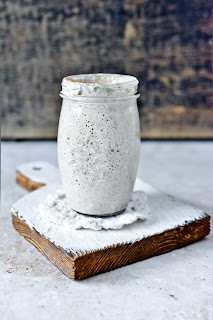Flour Power: How to Choose the Perfect Flour for Your Pizza

Photo by Olga Kudriavtseva on Unsplash The heart of any good dough is the flour used. Some flours are 'stronger' than others, but each serve their purpose. Think of flour (as soon as it is hydrated) as a spectrum between a balloon and a car tire. Think of lower protein (and W rated) flours as a balloon, and higher protein (and W rated) flours as a car tire. It will be easier to inflate a balloon than a car tire, but after a while, too much inflation will cause it to 'pop' and deflate, while inflating a car tire, it will require more inflation to fill, and even more so before it overinflates. The name of the game is matching your fermentation to suit your flour, or vice versa. Below is a list of my favorite flours! With proper handling, each one can handle more fermentation than mentioned, I just listed what I prefer for each flour =) There are two main proteins in flour, glutenin and gliadin, when they come in contact with water, they form gluten bonds.
.jpg)
